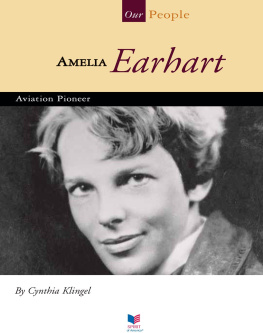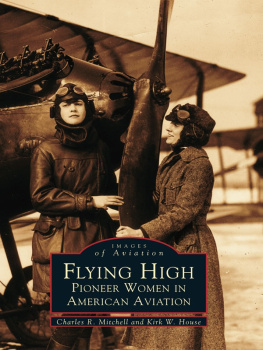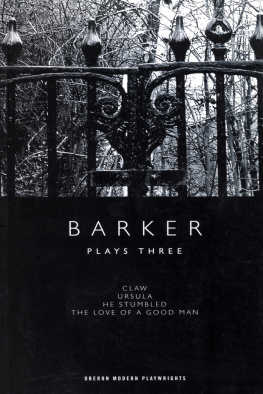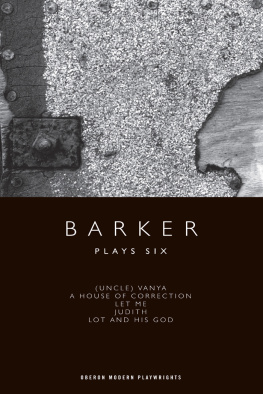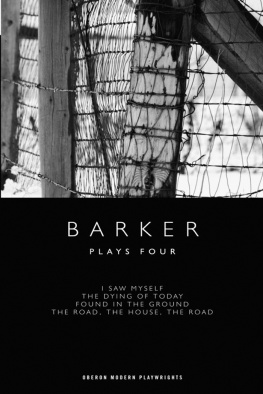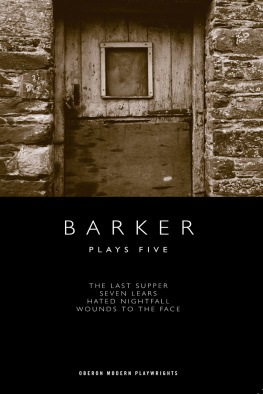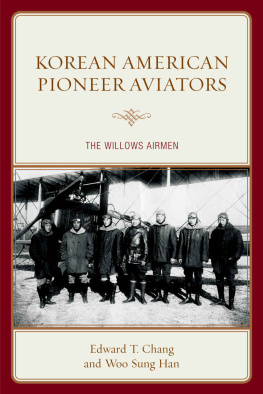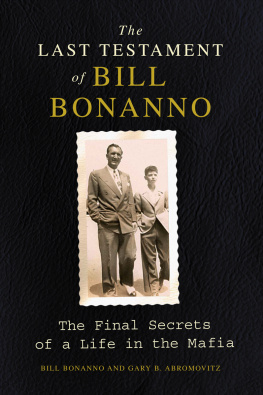Ralph Barker - Bill Lancaster: The Final Verdict: The Life and Death of an Aviation Pioneer
Here you can read online Ralph Barker - Bill Lancaster: The Final Verdict: The Life and Death of an Aviation Pioneer full text of the book (entire story) in english for free. Download pdf and epub, get meaning, cover and reviews about this ebook. year: 2015, publisher: Pen and Sword, genre: Detective and thriller. Description of the work, (preface) as well as reviews are available. Best literature library LitArk.com created for fans of good reading and offers a wide selection of genres:
Romance novel
Science fiction
Adventure
Detective
Science
History
Home and family
Prose
Art
Politics
Computer
Non-fiction
Religion
Business
Children
Humor
Choose a favorite category and find really read worthwhile books. Enjoy immersion in the world of imagination, feel the emotions of the characters or learn something new for yourself, make an fascinating discovery.

- Book:Bill Lancaster: The Final Verdict: The Life and Death of an Aviation Pioneer
- Author:
- Publisher:Pen and Sword
- Genre:
- Year:2015
- Rating:3 / 5
- Favourites:Add to favourites
- Your mark:
- 60
- 1
- 2
- 3
- 4
- 5
Bill Lancaster: The Final Verdict: The Life and Death of an Aviation Pioneer: summary, description and annotation
We offer to read an annotation, description, summary or preface (depends on what the author of the book "Bill Lancaster: The Final Verdict: The Life and Death of an Aviation Pioneer" wrote himself). If you haven't found the necessary information about the book — write in the comments, we will try to find it.
Ralph Barker: author's other books
Who wrote Bill Lancaster: The Final Verdict: The Life and Death of an Aviation Pioneer? Find out the surname, the name of the author of the book and a list of all author's works by series.
Bill Lancaster: The Final Verdict: The Life and Death of an Aviation Pioneer — read online for free the complete book (whole text) full work
Below is the text of the book, divided by pages. System saving the place of the last page read, allows you to conveniently read the book "Bill Lancaster: The Final Verdict: The Life and Death of an Aviation Pioneer" online for free, without having to search again every time where you left off. Put a bookmark, and you can go to the page where you finished reading at any time.
Font size:
Interval:
Bookmark:

First published in 1969 by George G. Harrap & Co. Ltd, London
Published in 1971 by St Martins Press Inc, New York
Reprinted by Fontana (the paperback imprint of William Collins Pty (Ltd), Sydney, 1986
Reprinted in this format in 2015 by
PEN & SWORD AVIATION
An imprint of
Pen & Sword Books Ltd
47 Church Street, Barnsley
South Yorkshire
S70 2AS
Copyright Ralph Barker 1969, 1971, 1986, 2015
ISBN: 978 1 47385 583 0
PDF ISBN: 978 1 47385 586 1
EPUB ISBN: 978 1 47385 584 7
PRC ISBN: 978 1 47385 585 4
The right of Ralph Barker to be identified as Author of this work has been asserted by him in accordance with the Copyright, Designs and Patents Act 1988.
A CIP catalogue record for this book is
available from the British Library
All rights reserved. No part of this book may be reproduced or transmitted in any form or by any means, electronic or mechanical including photocopying, recording or by any information storage and retrieval system, without permission from the Publisher in writing.
Printed and bound in England
By CPI Group (UK) Ltd, Croydon, CR0 4YY
Pen & Sword Books Ltd incorporates the Imprints of Pen & Sword Aviation, Pen & Sword Family History, Pen & Sword Maritime, Pen & Sword Military, Pen & Sword Discovery, Pen & Sword Politics, Pen & Sword Atlas, Pen & Sword Archaeology, Wharncliffe Local History, Leo Cooper, Wharncliffe True Crime, Wharncliffe Transport, Pen & Sword Select, Pen & Sword Military Classics, The Praetorian Press, Claymore Press, Remember When, Seaforth Publishing and Frontline Publishing
For a complete list of Pen & Sword titles please contact
PEN & SWORD BOOKS LIMITED
47 Church Street, Barnsley, South Yorkshire, S70 2AS, England
E-mail:
Website: www.pen-and-sword.co.uk
Contents
Prologue
THE three heavy trucks which comprised the motorized platoon of the Groupe Saharien Mixte du Touat had turned off the trans-Saharan motor-track at Bidon Cinq in the central Sahara two days earlier, on February 10th, 1962. The patrols purpose was to carry out a reconnaissance of the area in the region of Signal du Tanezrouft, one hundred miles west of Bidon Cinq, in the heart of the Tanezrouft desert. This was the parched, forsaken plain three hundred miles south of the French atomic station at Reggan over which the first French atomic bomb had been exploded two years earlier.
The platoon bivouacked for the night of the tenth, reconnoitred the Signal du Tanezrouft area on the morning of the eleventh, found nothing but a few prehistoric tombs, and then turned north, striking across the flat, featureless desert, on a course roughly parallel with the trans-Saharan motor-track a hundred miles to the east. After motoring eighty-five miles north of Signal du Tanezrouft they bivouacked again for the night.
The Tanezrouft, the very core of the Sahara, is a desert within a desert. Waterless, trackless, bereft of all plant and animal life, shunned by travellers, dreaded by explorers, it is avoided even by the Saharas own nomadic tribes, who call it the Land of Thirst. Here the desert is absolute.
The adjutant and mharistes of the motorized platoon carried their own food and water; the dry, dehydrating, desiccating heat demands at least two gallons of water per man per day. To start walking in the Tanezrouft at sunrise without water is to be dead by nightfall.
On the morning of February 12th the patrol was ready to abandon the uncharted hinterland of the Tanezrouft and return to the reassurance of the motor-track north of Bidon Cinq. But between them and the track lay an area of fech-fechsoft sand which even their heavy-duty tyres could not safely negotiate. They therefore continued their progress due north, hoping the sand to their right would improve.
They had travelled a further twenty-five miles when the fech-fech gave way to hard sand. Shortly afterwards they turned due east to pick up the motor-track. Otherwise the terrain was unchangedflat and featureless as far as the eye could see.
They had travelled exactly a hundred kilometres due east when they noticed a tiny black speck in the distance, very slightly off their course, and they steered towards it. In the Sahara, and particularly in the Tanez-rouft, every isolated feature deserves to be investigated, its nature recorded, and its position charted, as a possible future aid to navigation.
The shape of the object they were peering at was difficult to define. It was not until they were less than two kilometres from it that they realized it was a crashed aircraft.
At once they thought of the bomb. Perhaps, unknown to them, a plane had been lost at that time, forced down by the explosion, or by radiation.
When they were about a hundred yards from the wreck, the patrol adjutant ordered his platoon to draw aside so as to avoid any risk of contamination. Then he got down from his truck and approached the plane on foot.
From what he could see of it, it was a small, single-engined biplane, lying on its back, buckled and skeletal, its fabric covering perished. The nose of the plane, its propeller blades broken off at the shaft, was pointing towards the east, as though the pilot had been trying to reach the road. Perhaps, after the crash, he had done so. Yet it seemed from the wreckage that he must have been badly hurt.
Before the adjutant could attempt any closer study of the wreck his eye was held by an object which lay under what had been the lower starboard wing. It was the object he had been looking for. It was a human skull.
The body was lying on its left side, partly covered by a thin layer of sand. The state of preservation was good, and in the light of the discovery that the adjutant was about to make, extraordinary. Those parts which had been exposed to the air had become mummified in the dry desert atmosphere; they were like parchment. The right arm was slightly bent, with the fingers clutching upwards, perhaps towards the throat, in what must surely have been a dying gesture. The injury the man had received in the crash was clearly visible as a scar above the right eyebrow. The clothes were ragged but recognizable.
On the wings of the plane the dead pilot had tied his principal belongings. They included a thin metal case holding his passport and other documents, and a large waterproof envelope into which he had fitted his aircraft log-book. A glance at the log-book revealed that aircraft and body had lain undisturbed for twenty-nine years. The date of the flight that had ended in tragedy was April 12th, 1933.
After the crash, while he waited first for rescue and then for death, the pilot had kept a diary, using the empty pages of his log-book. It told a great deal about the man, and about the flight on which he had crashed. But above all it told of his love for a woman.
It was a love that had taken him away from wife and children, a love because of which, less than a year before his disappearance, he had stood trial for murder in an American court. It was a love which had buoyed him up with hope and courage in his last hours. Yet it was a love which, in the eyes of the world, had destroyed him.
Now, with this chance discovery by the French motorized platoon, the truth about this man, and about the woman he loved, might at last be known. His name was Bill Lancaster.
CHAPTER I

The Man without Fear
THE party in the Baker Street studio was generating a frenzy of chatter and animation. The open windows that allowed an attenuated echo of the din to escape into the street admitted just enough of the June night air to save the smoke-laden atmosphere from becoming suffocating. Presently the volume of sound ebbed as the vibrant notes of a grand piano struck an introductory chord. Then all was silence save for the music. The voices that sang were the most famous voices in London: the year was 1927, and two of the guests at the party were the black American singers Layton and Johnstone.
Next pageFont size:
Interval:
Bookmark:
Similar books «Bill Lancaster: The Final Verdict: The Life and Death of an Aviation Pioneer»
Look at similar books to Bill Lancaster: The Final Verdict: The Life and Death of an Aviation Pioneer. We have selected literature similar in name and meaning in the hope of providing readers with more options to find new, interesting, not yet read works.
Discussion, reviews of the book Bill Lancaster: The Final Verdict: The Life and Death of an Aviation Pioneer and just readers' own opinions. Leave your comments, write what you think about the work, its meaning or the main characters. Specify what exactly you liked and what you didn't like, and why you think so.


